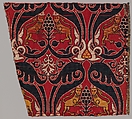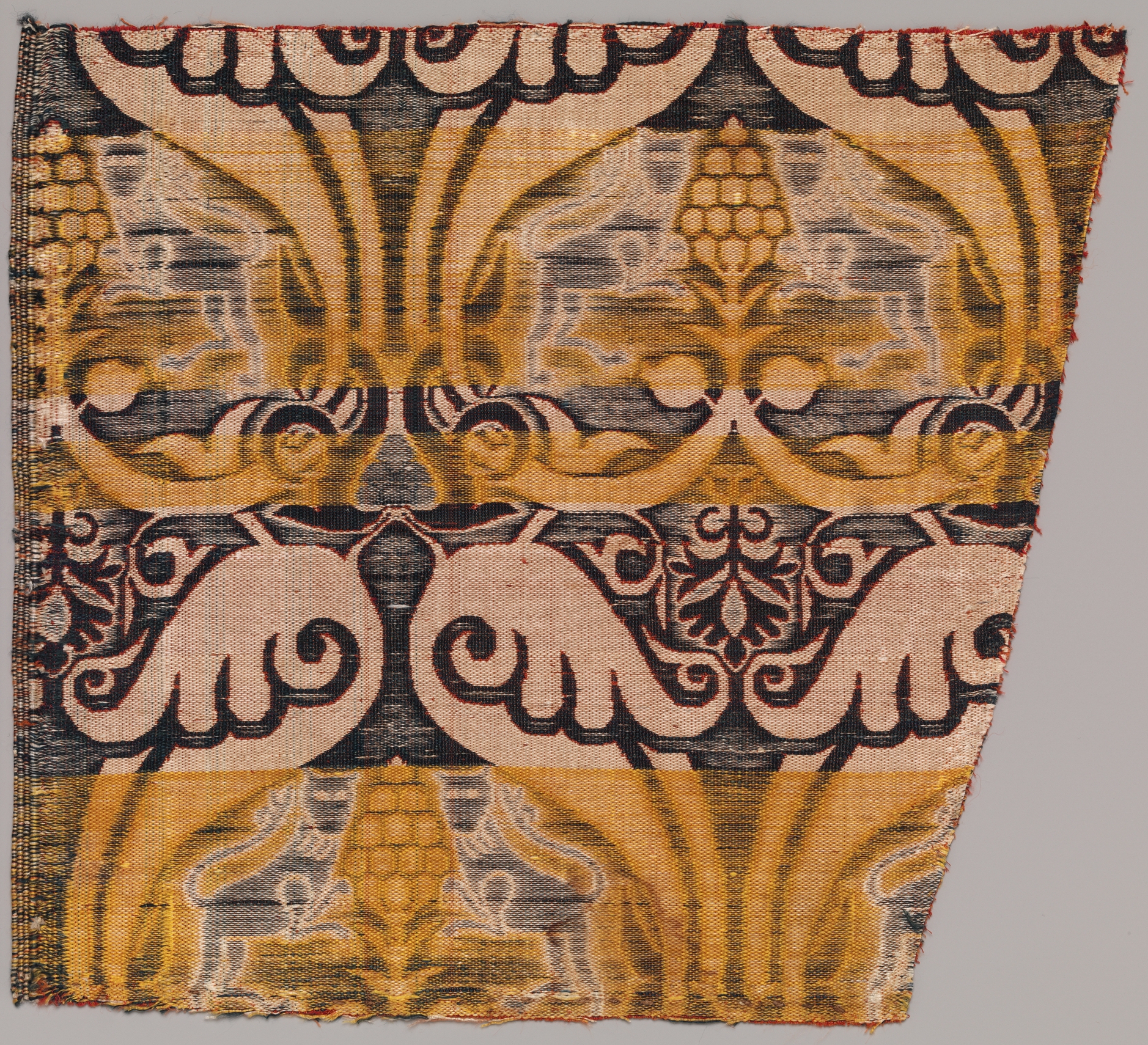Silk Fragment with Lions and Pomegranates
Not on view
Among Christian and Muslim communities of 15th-century Spain, textiles were symbols of wealth and status, and buyers crossed political and religious borders to purchase sought-after fabrics. This silk was woven in Granada—stronghold of the ruling Nasrid dynasty and an important center of silk production. Featuring a repeat pattern of stylized pomegranates and crowned lions, this design was evidently immensely popular, since more than twenty lion and pomegranate silks survive in museum collections around the world. These other examples reveal that weavers occasionally altered the colors or details of this basic pattern, attesting to the mass production of this and other fabric designs in late medieval Spain. The textile’s design also might give us clues to its date of production. While the pomegranate is the emblem of Granada, the crowned lions could imply that the textile was woven after the defeat of the Nasrids by the Catholic Monarchs in 1492. Granada continued to be a major center of silk weaving after its annexation to Castile.
Due to rights restrictions, this image cannot be enlarged, viewed at full screen, or downloaded.
This artwork is meant to be viewed from right to left. Scroll left to view more.



